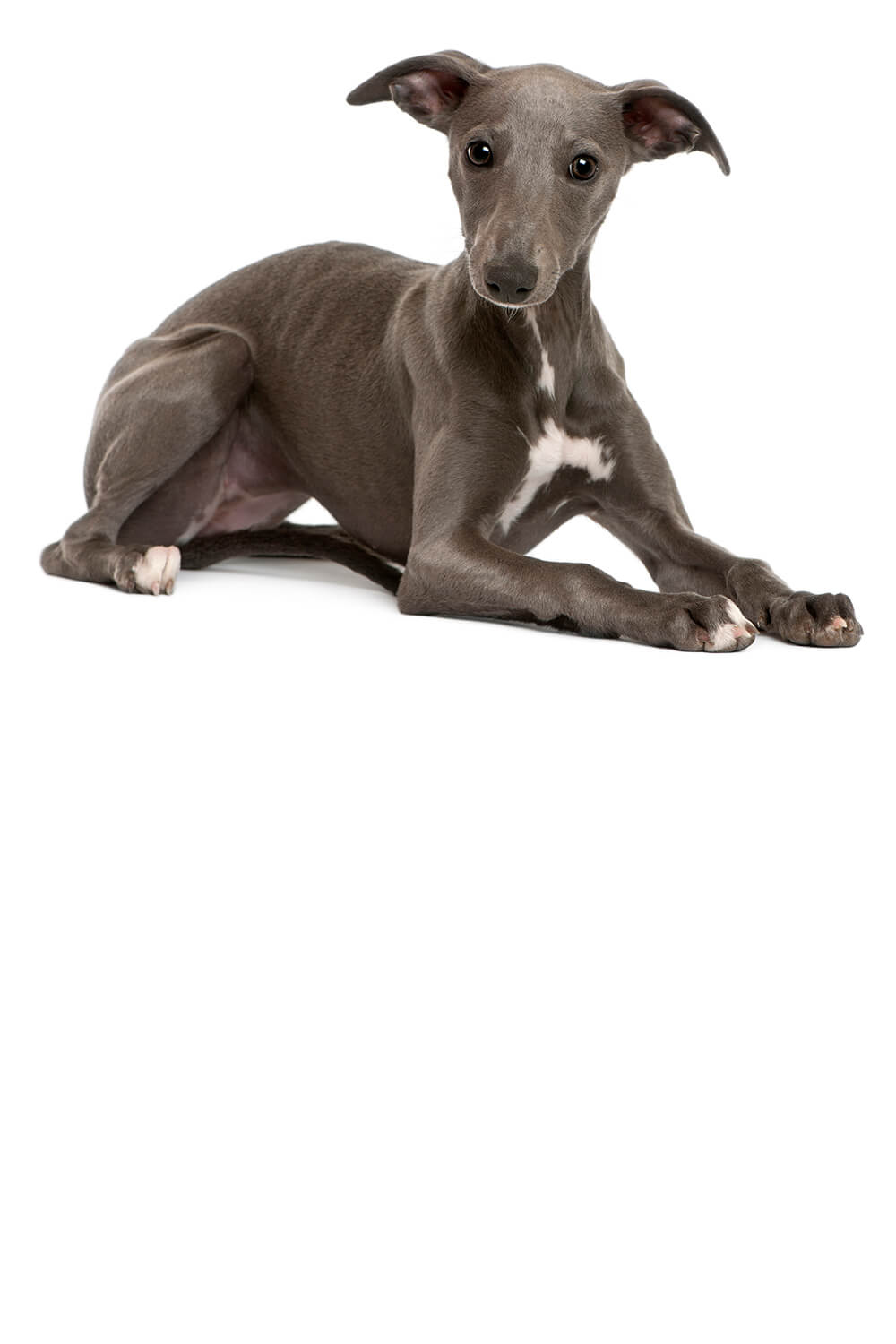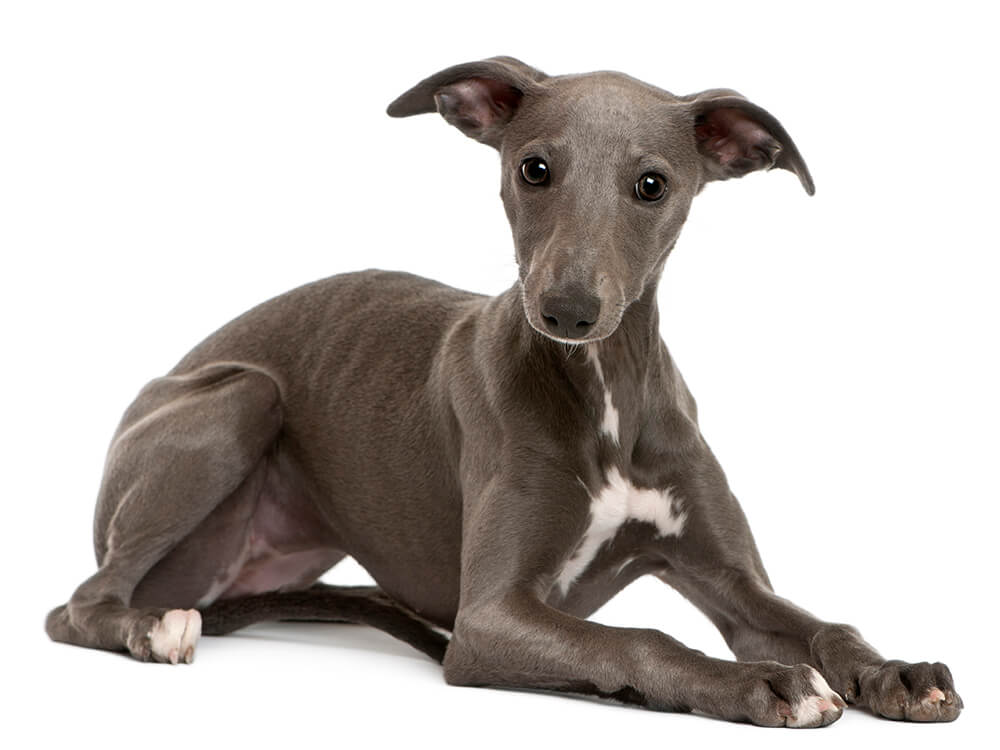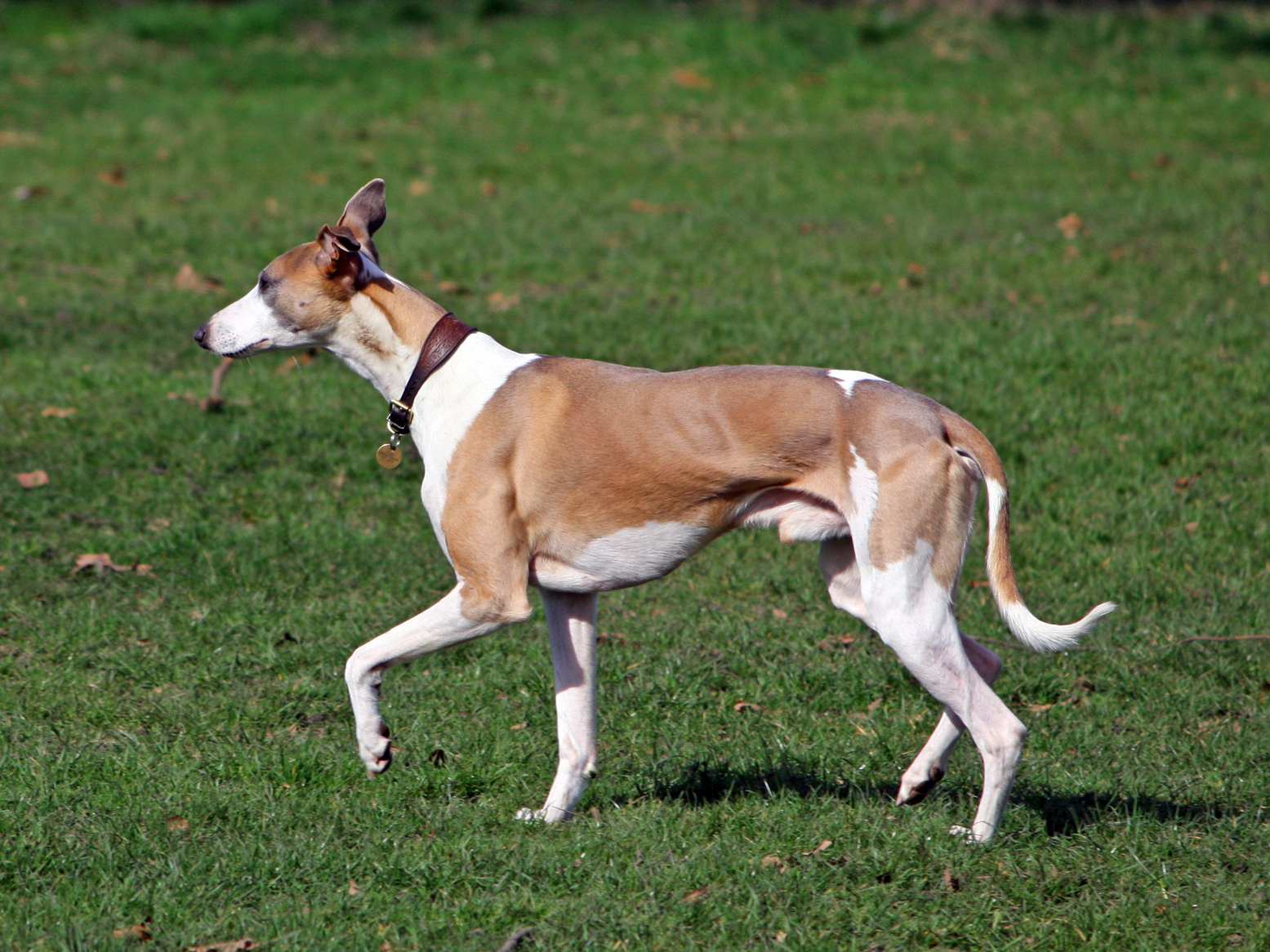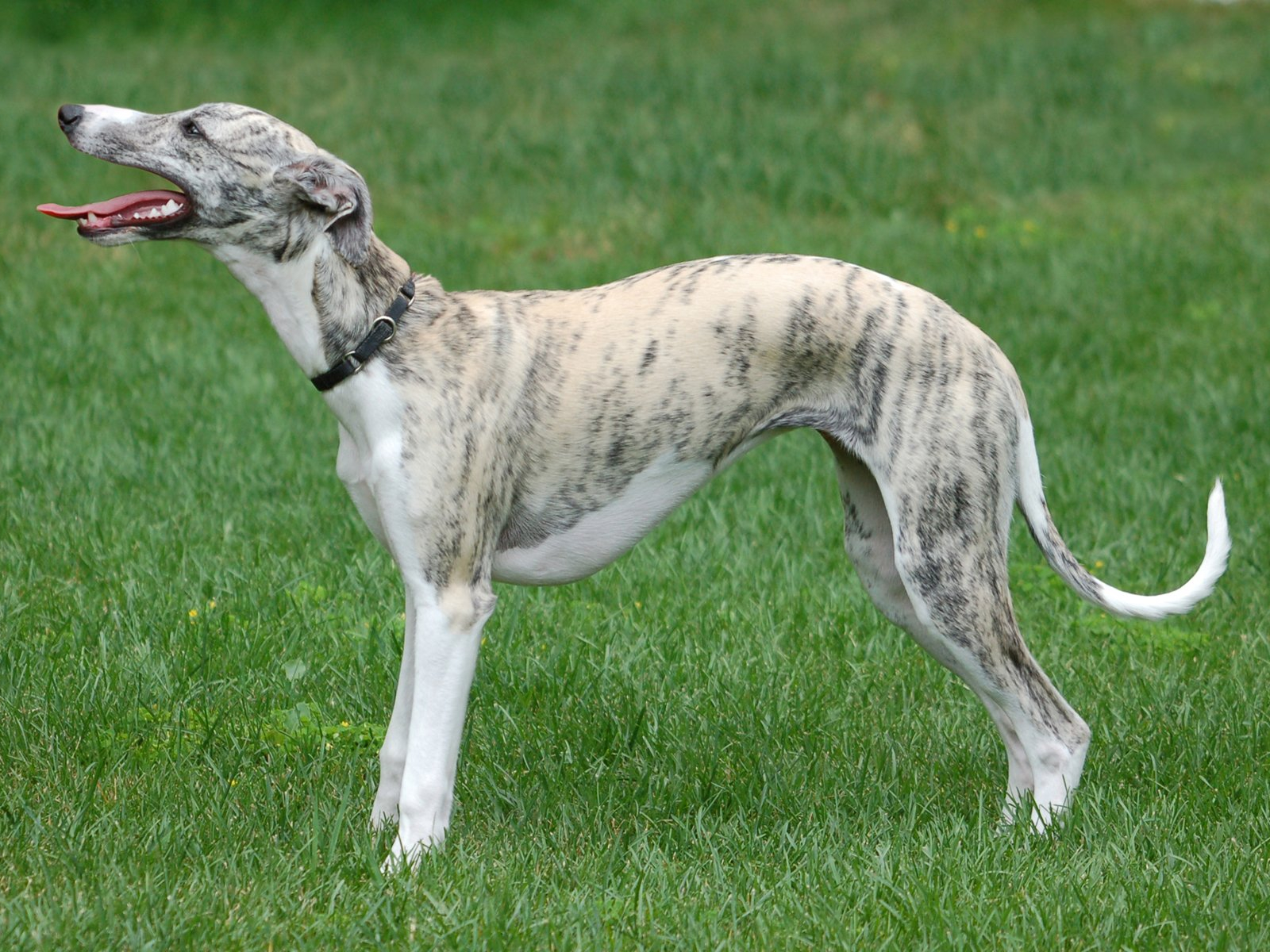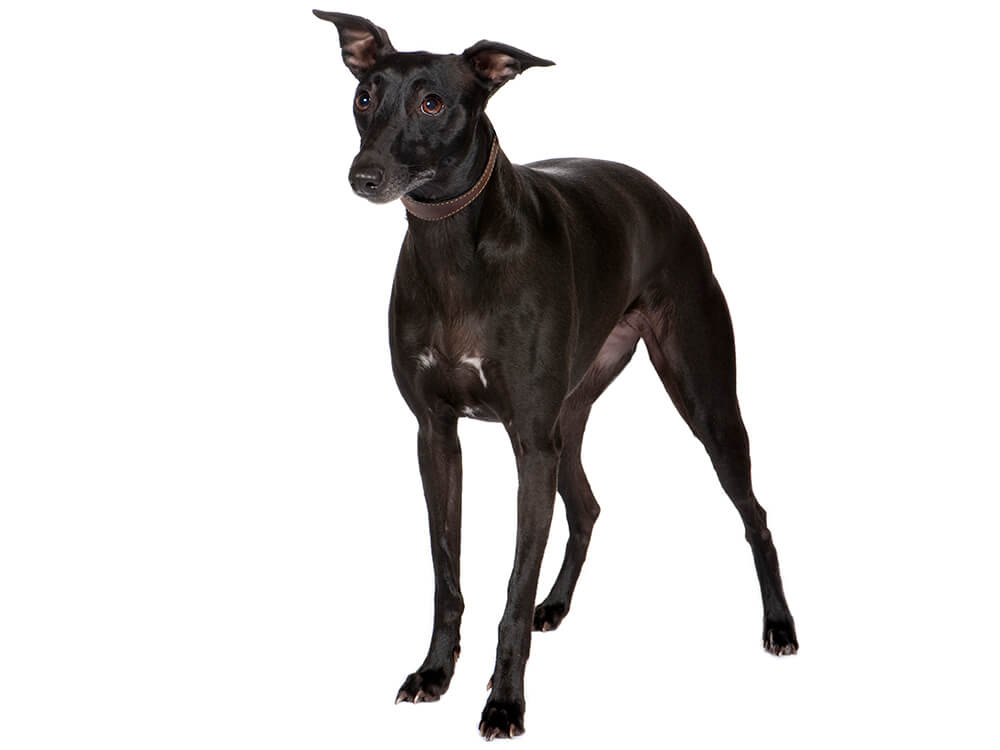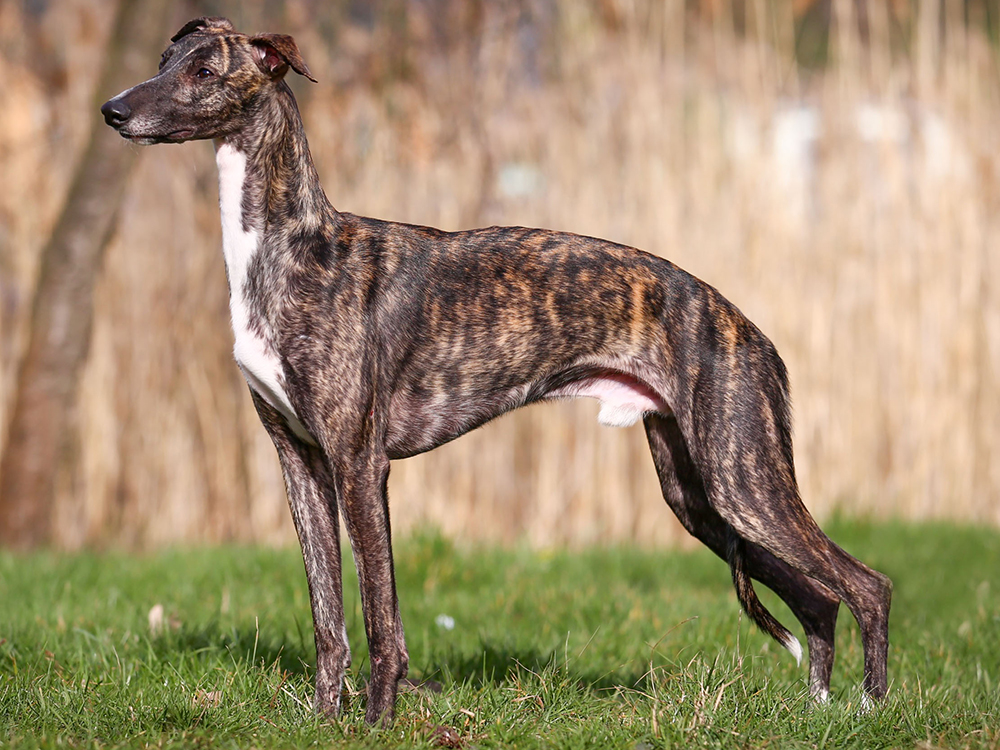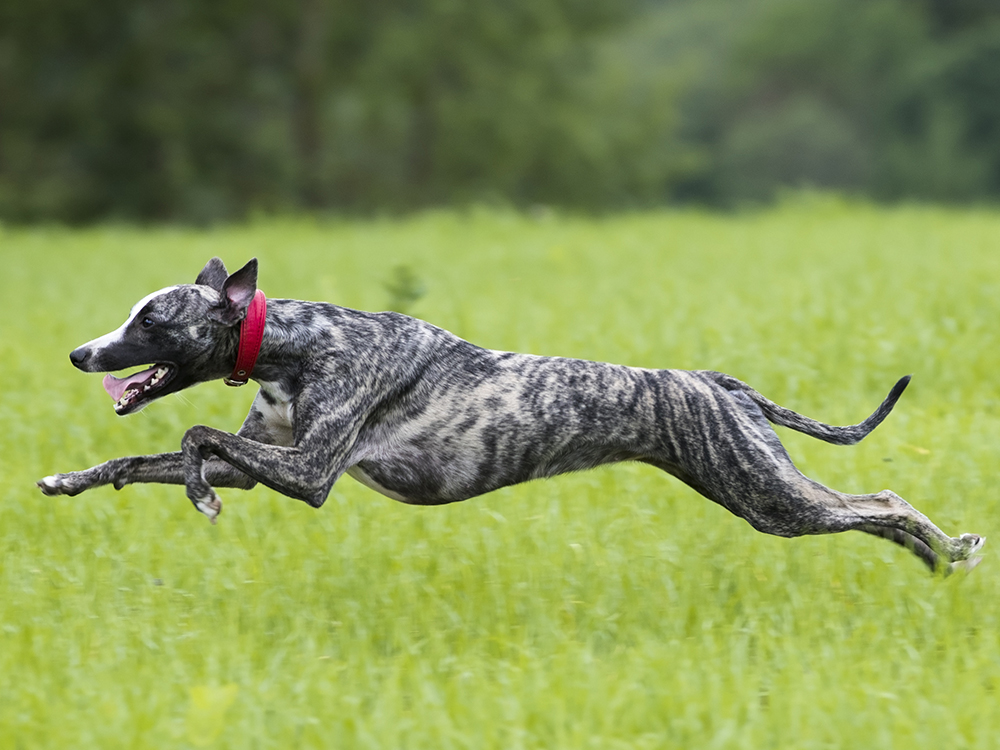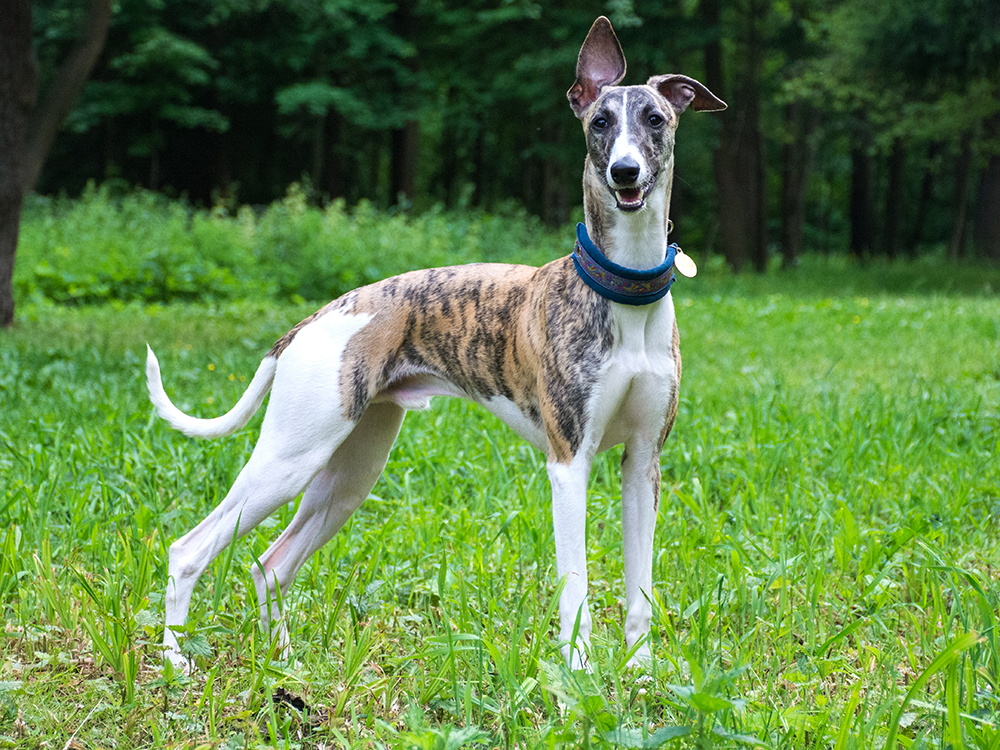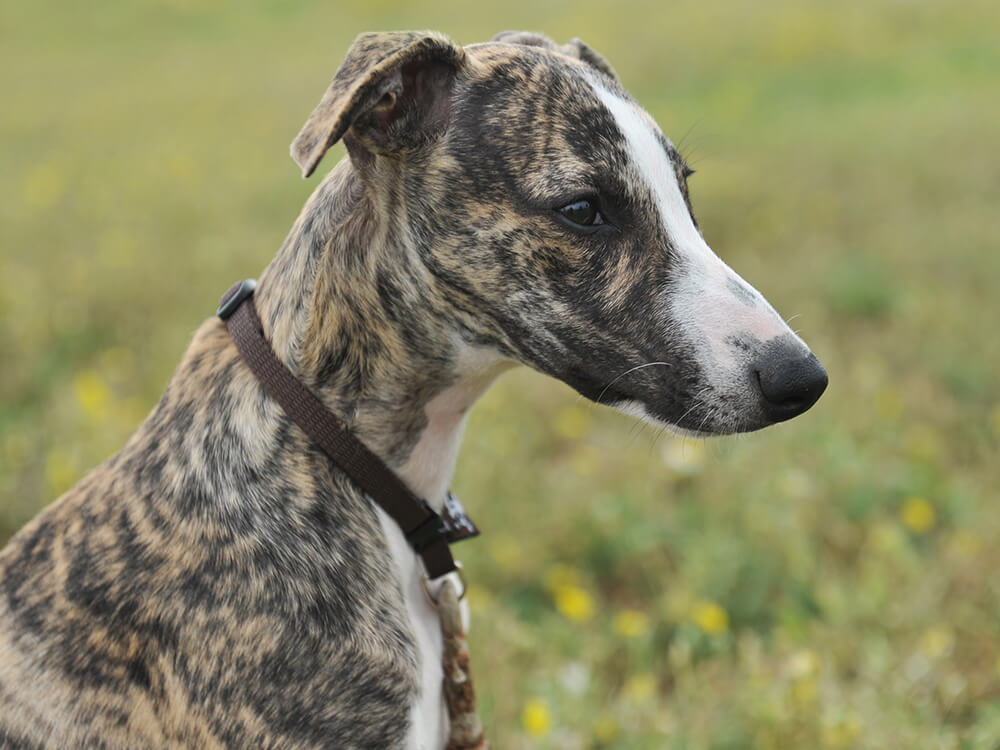
Whippet Breed Pictures
Vital Breed Stats
| Height: | 47 - 56 cm M | 44 - 54 cm F |
| Weight: | 11 - 21 kg M | 11 - 21 kg F |
| Breed Group: | Toy Dog Group |
| Life Expectancy: | 13 - 15 years |
| KC Registered: | No |
Breed Characteristics
| Size: |  |
| Grooming: |  |
| Exercise Level: |  |
| Trainability: |  |
| Barking Level: |  |
| Good with Children: |  |
| Good with other pets: |  |
| Affectionate: |  |
| Protective: |  |
| Cost to Keep: |  |
Give a thumbs up if you love the Whippet

0
More About the Breed
History
The “poor man’s Greyhound” emerged in England. Although the Whippet was first mentioned as far back as the 1600s, it referred to a different type of dog. Originally, the name was associated with English Greyhounds that were smaller than average. These dogs were deemed too small for hunting stags and were returned to breeders.
The breeders, usually peasants, were prohibited by law from owning Greyhounds. Despite this, they kept the rejected canines and kept on breeding them. Various racing, sporting, and coursing breeds, especially the Greyhound, were used in the crossbreeding. Their efforts produced a smaller variant of the Greyhound, which proved skilled at ratting and rabbit hunting. This new type of canine, the Whippet, was also used for gambling. Whippets raced and coursed, aside from hunting for their owners.
When the law banning Greyhound ownership among peasants was abolished, the new breed started to grow in popularity. It began to be called “snap dog” for its propensity for snapping up prey that was close to it.
In the 1800s, Whippet racing grew and became a significant sport in England. It was also at this time that 2 varieties of this sighthound were identified. One had the smooth coat, which is the Whippet as we know it today. The other had a rough coat, which was a result of Bedlington Terrier crossbreeding. Then, in the late 1800s, this canine was acknowledged as a distinct breed by The Kennel Club. Its name is inspired by the old English phrase “whip it”, which means “to move swiftly”.
The TKC recognition enabled the participation of Whippets in dog competitions and shows. Since then, 3 dogs of this breed have won Best in Show at Crufts. Today, the Whippet is said to be the most popular among the sighthounds.
Appearance
The average Whippet size is medium, with a height that ranges from 44-52 cm. Its weight ranges from 9-19 kg.
Like its bigger ancestor, this sighthound is elegant, lean, and powerful, with a muscular body and an athletic look. Its distinctly long and lean head is slimmer than its also long and muscled neck. Its nose is usually black although the colour can vary depending on the coat variation. This canine’s oval-shaped eyes are remarkable for their night vision quality and 250-degree sight. The average human sight range is just 180 degrees. Its eyes are placed further to the side of its head, allowing more range.
Its chest is very deep, with a broad and moderately long back that arches beautifully. Its ribs are well sprung and its belly is tucked. The Whippet’s hindquarters are powerful and muscular, with broad and muscled thighs. The legs are long and thin, ending in oval shaped feet with thick pads and decked with strong nails. Its feet are hare-like, giving this dog the ability to claw into the ground to propel itself more powerfully even with a light tread. Capable of running at speeds of 56 kph, this hound can outrun a kangaroo. As with its ancestor, the Whippet’s running style involves a double suspension gallop.
The Whippet’s single coat is generally smooth, short, and lies close to the skin. However, there are others of this breed with a longer coat. Remarkably, the short-haired ones have odourless coats. It comes in a wide variety of coat colours and patterns.
Grooming
Temperament
The Whippet temperament is wonderfully gentle, affectionate, and quiet. It may be a running fiend on the track, but it is a certified softie off it. Despite its athleticism, this hound is a couch potato. It is happy just lounging about or cuddling with its family after a spot of vigorous exercise.
This intelligent dog breed is highly adaptable, capable of thriving in small apartments, seldom barks, and is good with children. It is not prone to snapping and makes a wonderful family pet. When it seeks attention, it may nudge its human with its nose.
Intelligence
Although the Whippet is a generally calm and quiet dog, it may not be so for the first 3 years of its life. However, it is a sensitive canine and should be trained using positive reinforcement. It should also not be startled as it may overreact or jump at unexpected touches.
Being a sighthound, this canine has a high prey drive and will chase small animals, like cats. As such, it must be put on a lead when taken outside for a walk. Further, it tends to be shy and jumpy when it has not been socialised well at an early age. It tends to be cagey around strangers and may even bark at them. However, it is not known to show aggressive behaviour, preferring to keep its distance.
First-time owners who can provide enough exercise and appropriate training will find the Whippet a suitable pet. It is loyal and can form a strong bond with its human. As such, this canine should not be left alone for long.
Nutrition
Feeding
Whippet puppies should be fed 3-4 times daily. It should be fed 48g-183 g of food from ages 2-6 months, depending on its size and activity level. At 7 months old, it may be fed 40 g-166 g of food. From 8-10 months, it’s best to feed it 39 g-141 g daily. Once it reaches 11 months, it may be given adult food.
For adult Whippets, feed about 103 g-120 g for those weighing 7 kg and 114 g-132 g for those weighing 8 kg. Those weighing 10 kg can be given 135 g-156 g of food, whilst the 14 kg and above dogs may be given 154-176 g daily.
Health
- Skin disease and sensitivity
- Eye disease
- Heart disease
- Digestive issues
- Immune disease
- Corns
- Megaesophagus
Exercise
This breed may be a canine sprinting machine but it doesn’t need much exercise to keep it happy. An hour’s physical exertion daily is sufficient for this hound. It should be given opportunities to run a bit, but preferably in an enclosure. Homes with yards should ensure fences are at least 180 cm high. This is to keep the Whippet from running off after something that caught its eye.
As this sighthound has a single layered coat, it should be provided added insulation or protection when taken outdoors in cold weather.
Cost of Ownership
A pedigreed Whippet puppy may cost anywhere from £400 to £600. The costs of insurance can range from £24 (basic) to £45 (lifetime) monthly. Good quality food can range from £30-£40 every month. Veterinary expenses, including vaccinations, health checks, and spaying/neutering, may reach £800 annually.
Overall, the average expense in caring for a Whippet is about £60-£90 each month. This is dependent on the insurance coverage. Annually, overall lifetime cost estimates can range from £8,640 to £15,120 (12-14 years).
Whippet Breed Highlights
- This sighthound is an elegant, sweet, gentle, and calm dog.
- Its non-aggressive nature, capacity for forming strong bonds with its human and laid-back nature make it a suitable pet for first-time dog owners.
- Although athletic, Whippets do not require as much exercise. An hour’s exertion is sufficient.
- It is good with children and does not bark excessively, making it a good pet choice for families.
- The Whippet has a strong prey drive and will chase small animals. As such, it should be on a lead when walked.
- Its single coat is easy to maintain.
- This dog should not be left alone for long periods at home.
